What is an Excavator and What's It Used For?
- Equipment Tutorials
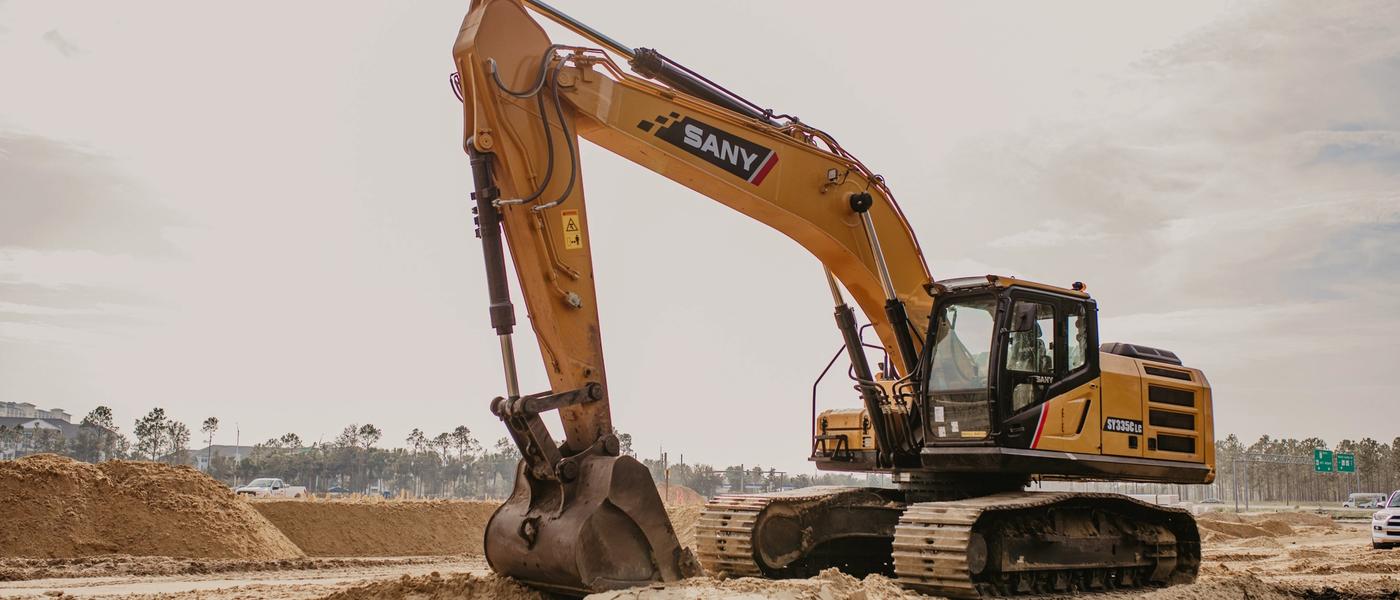
The excavator stands out as a pivotal player in the giants of construction equipment. But what exactly is an excavator? An excavator is a heavy-duty piece of machinery typically used for digging and moving large amounts of earth. This power-packed machine is a common sight on everything from small residential projects to massive industrial operations, featuring a rotating cab, an extendable arm with a bucket, and tracks or wheels for mobility. In this article, we'll dive into the meat of excavators: their uses, how they differ from similar machinery like backhoes, and why they are an indispensable asset in modern construction.
Defining Excavators
An excavator, defined simply, is an engineering marvel designed for digging, demolition, and earth-moving tasks. It's characterized by its long boom, the digging bucket attached at the end, and the cab atop a rotating platform (the house), which sits on an undercarriage with tracks or wheels.
The Main Parts of an Excavator:
If you haven’t already discovered, language in heavy equipment isn’t always straightforward. Some terms can be interchanged between regions, companies, and job sites. So, we’ll use the terms we hear most often to label this machine.
Boom: This is the large upper arm portion attached directly to the excavator's body. It provides the initial lifting power and is usually the first section to extend when the arm moves away from the machine.
Stick: The stick, sometimes known as the dipper, is the middle section of the arm that connects the boom to the bucket. It articulates at the end of the boom and extends the excavator's reach.
The Bucket: Attached to the stick, this component does the heavy lifting—literally. It's the part that digs, scoops, and carries the debris.
Hydraulic Cylinders: These are essential for the movement of both the boom (hydraulic boom cylinders) and the stick (hydraulic stick cylinder), as well as the bucket (hydraulic bucket cylinder). They enable precise control and powerful leverage for digging and lifting.
The Cab: Where the operator controls the excavator, this compartment can rotate 360 degrees, giving a comprehensive working range.
The Undercarriage: Providing mobility, it can have tracks for stability and traction on rough terrain or wheels for speed and maneuverability on flat surfaces. More often than not, you’ll see tracked excavators.
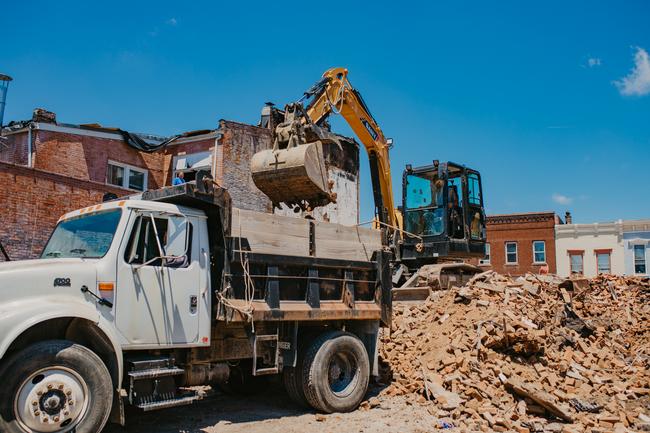
What are excavators used for?
Excavators are the powerhouse of any construction site, but their utility extends far beyond just digging. Here’s a look at the diverse applications that make excavators indispensable across various industries:
Construction: In the construction sector, excavators are the go-to machines for various tasks. They’re essential for digging foundations, grading land, and trenching for pipes and cables. Their powerful buckets can break through even the toughest soil, making them ideal for site preparation.
Demolition: Equipped with attachments like breakers and crushers, excavators can bring down buildings and process debris, clearing the way for new structures.
Material Handling: With the right attachments, excavators can move large quantities of materials — from sand and rocks to concrete and scrap metal.
Mining: Excavators are critical in mining operations for extracting minerals, digging shafts, and moving overburden.
Forestry: In forestry, excavators with special attachments perform tasks such as cutting trees, removing stumps, and loading logs.
Landscaping: Smaller excavators are often used in landscaping to sculpt landforms, dig ponds, and prepare gardens.
Snow Removal: In colder climates, excavators with snow plow attachments can clear snow from roads and other surfaces.
Disaster Cleanup: Following natural disasters, excavators can help remove debris, assist in search and rescue, and aid in the reconstruction process.
Dredging: Excavators maintain waterways, harbors, and docks, ensuring they are navigable and free from sediment build-up.
Underwater Operations: Specially adapted excavators can even work underwater to repair pipelines or construct underwater structures.
Road Construction: They play a critical role in cutting and filling during the construction and maintenance of roads.
These varied applications underscore the excavator's versatility. By changing out the bucket for different attachments — such as augers, rippers, or compaction wheels — an excavator can adapt to many environments and job requirements, proving that it’s much more than just a digging machine.
Excavator vs. Backhoe
While excavators and backhoes may seem similar at first glance, they're actually quite different in design, functionality, and the jobs they're suited for. Understanding these differences is crucial when selecting the right equipment for your project.
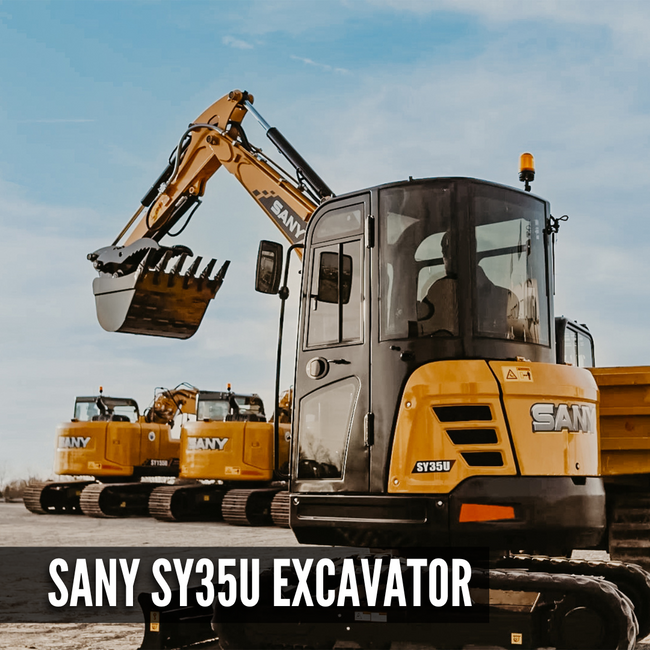
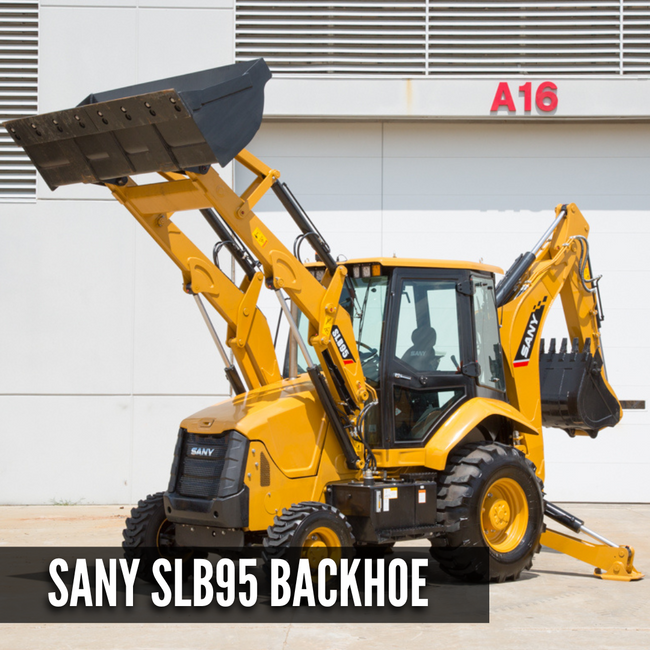
Design and Size
Excavators are typically larger and heavier, featuring a long boom and stick that allows for a full 360-degree rotation. This design maximizes their efficiency for digging deep, extensive excavation projects, and heavy lifting tasks.
Backhoes, on the other hand, have a more compact frame and are characterized by a two-part arm – a shorter boom and a stick – that only allows for about 200 degrees of side-to-side movement. They also have a loader bucket that excavators are lacking. The backhoe’s arm is used for digging by pulling backward toward the machine.
Functionality
Excavators are built for large-scale projects. They excel at tasks that require significant digging depth and extensive reach, such as major construction projects, mining, and heavy-duty lifting operations.
Backhoes are more versatile in smaller spaces and are often used for moderate tasks like trenching, back-filling, and material handling. They are also equipped with a loader bucket on the front, making them suitable for various tasks, from digging to material transport.
Preferred Situations
Excavators are typically the go-to choice for job sites requiring extensive excavation work, precise digging around obstacles, or any project requiring a considerable range of motion.
Backhoes are often favored for urban construction projects, small demolitions, and agricultural tasks. Their smaller size and versatility make them ideal for working in tighter spaces and projects requiring digging and loading capabilities.
An excavator is likely your best bet if you need heavy-duty power and an extensive range of motion. But if your project is smaller in scale, requires a mix of digging and loading, and you’re working in a more confined space, a backhoe might be the more practical choice. Each machine brings its strengths to the table, and the decision on which to use should be based on the specific needs of the project at hand.
Types of Excavators
The excavator family comes in various shapes and sizes, each tailored for specific tasks and environments. Here’s a rundown of some common types of excavators and how they match up with different jobs.
Tracked Excavators (Also Known as Crawlers)
These are the heavy hitters of the excavator world. Equipped with tracks instead of wheels, they provide better stability and traction on soft or uneven terrain. Crawlers are ideal for large-scale excavation projects, grading, and landscape grading where stability and heavy lifting are required.
Wheeled Excavators
For projects that require mobility over stability, wheeled excavators are the way to go. They can move quickly from one part of the job site to another and are best suited for urban construction projects where they can drive on streets without damaging the pavement.
Mini Excavators
Don't let their size fool you; these compact machines pack a punch. Mini-excavators are perfect for jobs in tight spaces that larger excavators can't access, like residential projects, indoor work, or backyard landscaping. They're also easier to transport between job sites.
Long-Reach Excavators
With an extended boom and stick, long-reach excavators are designed to dig deep trenches, demolish high structures safely, and dredge rivers or lakes with their far-reaching capabilities.
Dragline Excavators
These are larger machines often used in mining and civil engineering projects for bulk earth-moving and heavy lifting. Draglines are unique in that they use a hoist rope system that attaches to a bucket via a hoist coupler.
Each type of excavator brings its own advantages to the table. Tracked excavators are your best bet for major construction projects where power and precision are paramount. Mini-excavators are your versatile partners for smaller projects and confined spaces. When speed is necessary and the ground conditions are solid, wheeled excavators can do the job quickly. For jobs that require reach, such as port construction or complex demolition, reach for a long-reach excavator. And dragline excavators are the heavy-duty answer for those large-scale industrial jobs where significant earth-moving is the order of the day.
Selecting the right type of excavator comes down to understanding the specific demands of your project—whether it's the terrain, the scale of work, or the accessibility of the job site.
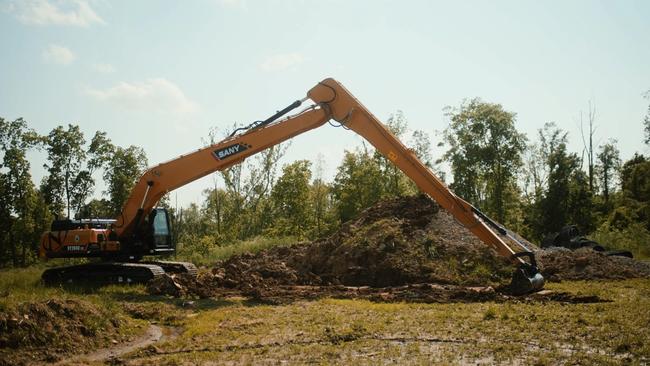
Operating an Excavator Safely
We won’t pretend we’re OSHA, but safety is crucial when operating heavy machinery, and excavators are no exception. Adhering to safety protocols not only protects the operators but also ensures the well-being of everyone on the job site.
Take all the training available and follow best practices to stay vigilant on the job site.
Renting vs. Buying Excavators
When acquiring an excavator, businesses face a critical decision: to rent or buy. This choice comes down to several factors that can influence the cost-effectiveness and practicality for your company's needs.
Considerations for Deciding to Rent or Buy
- When considering project duration and frequency, renting an excavator often makes sense for short-term needs or one-time projects, offering cost-effectiveness without a long-term commitment. In contrast, purchasing is typically the more economical choice for frequent and long-term use.
- The high initial outlay of buying an excavator can be a significant factor regarding capital and cash flow. Businesses looking to maintain liquidity for other ventures may find renting allows for better financial resource allocation.
- The maintenance and storage of an excavator can add considerable costs to ownership. Opting to rent can alleviate these concerns, as the rental company assumes these responsibilities.
- Excavator owners must account for equipment depreciation in their financial planning, as the value of machinery diminishes over time.
- Staying current with up-to-date technology is easier with rentals, which can provide access to the latest excavator models, boasting advanced features that enhance job site efficiency and productivity.
- Flexibility is a crucial advantage of renting; businesses can adjust their equipment inventory in line with changing project demands, scaling up or down as necessary without the burden of ownership.
Pros and Cons
Pros of Renting
- Flexibility to choose specific models suited for each project.
- Lower initial investment and the ability to expense the rental cost as a business operating cost.
- You don't have a long-term commitment to a single piece of equipment.
- You don't have to deal with depreciation.
Cons of Renting
- Potential for higher long-term costs if rented frequently.
- Limited availability during peak construction periods.
Pros of Buying
- Long-term cost savings if the equipment is used regularly.
- Asset ownership can be capitalized and depreciated.
- Complete control over the equipment's availability and usage.
Cons of Buying
- Significant upfront capital requirement.
- Ongoing maintenance, repair, and storage costs.
- The risk of technological obsolescence.
- Depreciation over the years.
The decision to rent or buy an excavator should be based on a careful evaluation of your company’s financial situation, the frequency of use, and the specific requirements of the projects you undertake. Consider immediate needs and long-term plans to make the most financially sound decision.
The more you know…
Excavators are much more than just digging machines. Their power, precision, and versatility make them a staple in construction, mining, demolition, and more.
These machines shape the world around us, from the transformation of landscapes to the infrastructures that rise from the ground. Even if you're not the one operating, knowing the crucial role of excavators adds a layer of appreciation for the complexity and the power behind the development and maintenance of our environment.
So the next time you pass by a construction site or a significant landscaping project, you'll have an insider's understanding of one of the MVPs — the versatile and ever-important excavator.
